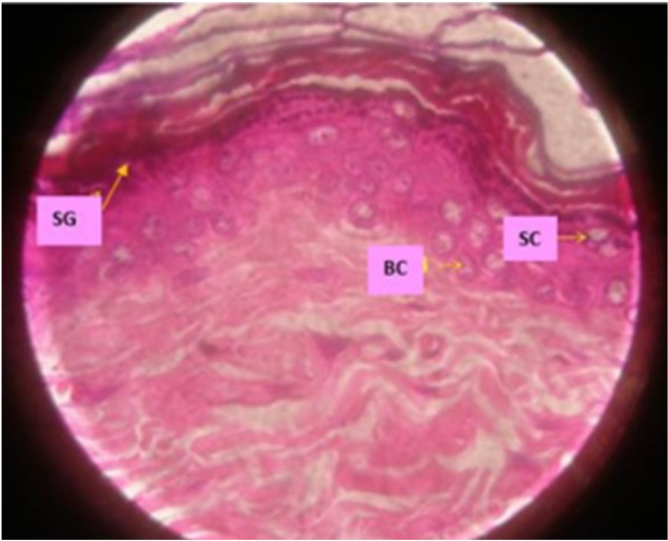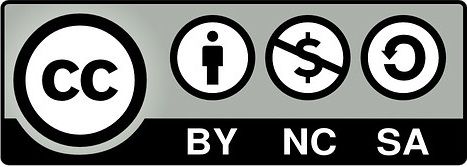Wound healing activity of Allium cepa L. bulbs in a second-degree burn wound model in Holtzman rats
DOI:
https://doi.org/10.17533/udea.vitae.v28n3a345737Keywords:
Burn, Allium cepa L, Phytochemicals, Burn healing, Silver sulfadiazine, Histology, OnionAbstract
Background: The bulb of Allium cepa Linnaeus (onion) is used in traditional medicine as an antidiabetic, antioxidant, antihypertensive, anti-inflammatory, and antihyperlipidemic, among others. The lack of information or little knowledge about the effects of Allium cepa L. on skin lesions, specifically burn wounds, arouses interest in studying its effects on these skin disorders. Objective: This study assessed the wound healing activity of Allium cepa L. on second-degree burns induced in Holtzman rats. Method: Thirty-two albino rats were randomly distributed into four groups of 8 rats each, including the Healthy group, the Control group, the Experimental group (Allium cepa L.), and the Standard group (1% silver sulfadiazine). Burn wounds were induced, and topical treatments were performed daily for 21 days. The reduction of the burned body area (mm2) was determined during the experimental time. Albino rats were sacrificed with an excess of surgical anesthesia to obtain tissue samples for histopathological analysis. Results: Standard and experimental groups significantly reduced burned body area (p<0.01) compared to the control group. Histopathological studies showed hyperemic chorion in the Control group, fibroblasts, and collagen in the Standard group, and dermis composed of a reticular stratum of fibroblasts, collagen, and few blood vessels in the Experimental group. Conclusion: Allium cepa L. revealed wound-healing activity on burns induced in Holtzman rats and reduced the damage produced by burns.
Downloads
References
Lukiswanto BS, Miranti A, Sudjarwo SA, Primarizky H, Yuniarti WM. Evaluation of wound healing potential of pomegranate (Punica granatum) whole fruit extract on skin burn wound in rats (Rattus norvegicus). J Adv Vet Anim Res. 2019; 6(2):202-207. DOI: http://doi.org/10.5455/javar.2019.f333
Schencke C, Vasconcellos A, Salvo J, Veuthey C, Del Sol M. Efecto cicatrizante de la miel de ulmo (Eucryphia cordifolia) suplementada con ácido ascórbico como tratamiento en quemaduras. Int. J. Morphol. 2015; 33(1):137-143. DOI: http://dx.doi.org/10.4067/S0717-95022015000100022
World Health Organization. Burns [Internet], https://www.who.int/es/news-room/fact-sheets/detail/burns 2020 (accessed 06 December 2020).
ANDINA. Agencia peruana de noticias. Cada año se reportan en Perú unos 15,000 casos de niños quemados. [Internet], https://andina.pe/agencia/noticia-cada-ano-se-reportan-peru-unos-15000-casos-ninos-quemados-757545.aspx 07/11/2019 (accessed 08 December 2020)
Akhoondinasab MR, Akhoodinasab M, Saberi M. Comparison of healing effect of Aloe vera extract and silver sulfadiazine in burn injuries in experimental rat model. World J Plast Surg 2014; 3(1):29-34. Available from: https://www.ncbi.nlm.nih.gov/pmc/articles/PMC4236981/
Lozada D. Recuperación de la integridad de la piel en ratas inducidas a quemaduras tratadas con extracto hidroalcohólico de Spondias mombin (Ulcos). 2020. [Grade Work]. [Lima, Peru]: Universidad María Auxiliadora. 2020. 88 p. Available from: http://repositorio.uma.edu.pe/handle/UMA/226
Vaghardoost R, Ghavami y, Sobouti B. The effect of Mentha pulegium on healing of burn wound injuries in rat. World J Plast Sur. 2019; 8(1):43-50. Available from: https://www.ncbi.nlm.nih.gov/pmc/articles/PMC6409140/
Cueto T. Situación fitosanitaria de la cebolla roja (Allium cepa), en Barranca. [Grade Work]. [Lima, Peru]: Universidad Nacional de La Molina. 2017.48 p. Available from: http://repositorio.lamolina.edu.pe/handle/UNALM/2958
Bystricka J, Musilova J, Vollmannova A, Timoracka M, Kalcova P. Bioactive components of onion (Allium cepa L.)- A review. Acta Alimentaria. 2013; 42(1):11-22. DOI: https://doi.org/10.1556/aalim.42.2013.1.2
National Research Council (US) Committee for the Update of the Guide for the Care and Use of Laboratory Animals. Guide for the Care and Use of Laboratory Animals. [Internet] 8th ed. Washington DC. National Academies Press (US). 2011. [Cited 2020 December 16].220p. Available from: https://www.ncbi.nlm.nih.gov/books/NBK54050/
Lock O. Investigación fitoquímica. Métodos en el estudio de productos naturales. 3ª ed., Fondo Editorial Pontificia Universidad Católica del Perú, Lima; 2013. 287p.
Gennaro A. Remington: Farmacia.Tomo.1. 20 ed., Médica Panamericana S.A, Buenos Aires; 2003.3894p.
Hawk CT, Leary S, Morris T. Formulary for laboratory animals. [Internet]. Iowa: Backwell Publishing; 2005 [cited 2021 January 27]. 196 p. Available from: https://www.upstate.edu/iacuc/pdf/Formulary_for_Lab_Animals_3rd_ed.pdf
Corzo Martínez M, Corzo N, Villamiel M. Biological properties of onion and garlic. Trends Food Sci. Technol.2007; 18(12):609-625. DOI: https://doi.org/10.1016/j.tifs.2007.07.011
Rodríguez Galdón B, Rodríguez Rodríguez E, Díaz Romero C. Flavonoids in onion cultivars (Allium cepa L.). J Food Sci. 2008;3(8):C599-605. DOI: https://doi.org/10.1111/j.1750-3841.2008.00903.x
Dalhat M, Adefolake F, Musa M. Nutritional composition and phytochemical analysis of aqueous extract of Allium cepa (onion) and Allium sativum (garlic). Asian Food Science Journal. 2018; 3(4): 1-9. DOI: https://doi.org/10.9734/AFSJ/2018/43165
Boukeria S, Kadi K, Kalleb R, Benbott A, Bendjedou D, Yahia A. Phytochemical and physicochemical characterization of Allium sativum L. and Allium cepa L. Essential oils. J. Mater. Environ. Sci. 2016 ; 7(7):2240-2257. Available from: https://www.jmaterenvironsci.com/Document/vol7/vol7_N7/254-JMES-2066-Boukeria.pdf
Farag M, Ali S, Hodaya R, El-Seedi H, Sultani H, Laub A, et al. Phytochemical orofiles and antimicrobial activities of Allium cepa Red cv. and A. sativum subjected to different drying methods: A comparative MS-Based metabolomics. Molecules.2017; 22(5):761. DOI: https://doi.org/10.3390/molecules22050761
Shenoy C, Patil MB, Kumar R, Patil S. Preliminary phytochemical investigation and wound healing activity of Allium cepa (Liliaceae). Int J Pharm Pharm Sci. 2009;1(2):167-175. Available from: https://innovareacademics.in/journal/ijpps/Vol1Issue2/208.pdf
Durmus A, Yaman M, Can H. Effects of extractum cepae, heparin, allantoin gel and silver sulfadiazine on burn wound healing: an experimental study in a rat model. Vet Med (Praha). 2012;57(6):287-292. DOI: https://doi.org/10.17221/6015-VETMED
Kimura Y, Sumiyoshi M, Kawahira K, Sakanaka M. Effect of ginseng saponins isolated from Red Ginseng roots on burn wound healing in mice. Br J Pharmacol. 2000; 148(6):860-870. DOI: https://doi.org/10.1038/sj.bjp.0706794
Upadhyay R. Nutraceutical, pharmaceutical and therapeutic uses of Allium cepa: A review. Int. J. Green Pharm. 2016 (Suppl). 10(1): S46-S64. DOI: http://dx.doi.org/10.22377/ijgp.v10i1.612
Ben-Kedir S, Bardaa S, Chabchoub N, Moalla D, Sahnoun Z, Rebai T. The healing effect of Pistacia lentiscus fruit oil on laser burn. Pharm Biol. 2017; 55(1):1407-1414. DOI: https://doi.org/10.1080/13880209.2016.1233569
Egri, Ö, Erdemir N, Gevrek F. Effect of H. perforatum oil containing membranes on the second degree burn wounds in rats. Mater Today Commun. 2020; Vol. 24, 100954. DOI: https://doi.org/10.1016/j.mtcomm.2020.100954
Alca, E, Del Solar M, Bravo F. Efecto de la xantopterina en la cicatrización de heridas por quemaduras en ratas. Folia Dermatol. 2009; 20(1):13-17. Available from: https://sisbib.unmsm.edu.pe/BVRevistas/folia/vol20_n1/pdf/a03v20n1.pdf
Bayir Y, Un H, Ugan R, Akpinar E, Cadirci E, Calik I, et al. The effects of Beeswax, Olive oil and Butter impregnated bandage on burn wound healing. Burns. 2019; 45(6):1410-1417. DOI: https://doi.org/10.1016/j.burns.2018.03.004
Tsala D, Joseph M, Simplice T, Nga N, Jacques E, David M. Effect of methanol extract of Allium cepa Linn. on incisional wound healing in alloxan-induced diabetic mice. Appl Med Res. 2015; 1(3):90-93. DOI: https://dx.doi.org/10.5455/amr.20150427021827
Tuhin R, Begum M, Rahman M, Karim R, Begum T, Ahmed S, et al. Wound healing effect of Euphorbia hirta Linn. (Euphorbiaceae) in alloxan induced diabetic rats. BMC Compl Alternative Med. 2017; 17(1), 423. DOI: https://doi.org/10.1186/s12906-017-1930-x
Lanzotti V. The analysis of onion and garlic. J Chromatogr A. 1112 (1-2): 3- 22. DOI: https://doi.org/10.1016/j.chroma.2005.12.016
Jaiswal N, Kumar D, Rizvi S. Red onion extract (Allium cepa L.) supplementation improves redox balance in oxidatively stressed rats. Food Sci. Hum. Wellness. 2013; 2(2):99-104. DOI: https://doi.org/10.1016/j.fshw.2013.05.003
Heidari M, Bahramsoltani R, Abdolghaffari A, Rahimi R, Esfandyari M, Baeeri M, et al. Efficacy of topical application of standardized extract of Tragopogon
graminifolius in the healing process of experimental burn wounds. J Tradit Complement Med. 2019; 9(1):54-59. DOI: https://doi.org/10.1016/j.jtcme.2018.02.002
MacKay D, Miller A. Nutritional support for wound healing. Altern Med Rev. 2003; 8(4):359-377. Available from: https://pubmed.ncbi.nlm.nih.gov/14653765/
Fain O. Vitamin C deficiency. Revue Med Interne. 2004; 25:872-880. DOI: https://doi.org/10.1016/j.revmed.2004.03.009
Pikula M, Zebrowska ML, Poblocka-Olech L, Krauze-Baranowska M, Sznitowska M, Trzonkowski P. Effect of enoxaparin and onion extract on human skin fibroblast cell line- therapeutic implications for the treatment of keloids. Pharm Biol. 2014; 52(2):262-267. DOI: https://doi.org/10.3109/13880209.2013.826246
Zurada J, Kriegel D, Davis I. Topical treatments for hypertrophic scars. J Am Acad Dermatol 2006; 55(6):1024-1031. DOI: https://doi.org/10.1016/j.jaad.2006.03.022

Published
How to Cite
Issue
Section
License
Copyright (c) 2021 Ana María Guevara-Vásquez, Carmen Marín-Tello

This work is licensed under a Creative Commons Attribution-NonCommercial-ShareAlike 4.0 International License.
Copyright Notice and Open Access Statement
The Journal Vitae works under the Open Access license, and the published manuscripts remain available for the public, both on the Journal's website and in databases, under the Creative Commons license, "Noncommercial Attribution" and "Share alike" systems, adopted in Colombia. Hence, when the authors agree to publish in the Journal Vitae, they will not have the right to economic retributions on publications and reproductions through different diffusion media. The documents are freely available to the internet public, permitting users to read, download, copy, distribute, print, search, or link to the full texts and pass them as data to software. The only constraint on reproduction and distribution, should be to give authors control over the integrity of their work and the right to be appropriately acknowledged and cited.
Authors declare that:
-
They are the intellectual property owners and are responsible for all the information stated in the article.
-
This manuscript has not been submitted or published in other printed or digital media. They accept the responsibility for the judgments, opinions, and points of view expressed in the published article and, therefore, they exonerate Universidad de Antioquia and Journal Vitae from any process.
-
They exempt Universidad de Antioquia and Journal Vitae from settling conflicts or disputes related to the authorship of the referred article.
-
They accept the revision of the original manuscript by suitable personnel, and they bind themselves to perform the corrections appointed or suggested by the assessors.
-
Therefore, they know the editorial process and will not bind the Editorial Board of the Journal to assume any obligations regarding the volume and issue in which the article is published.
-
They transfer the rights of publication, reprinting, and distribution of the article from the moment of its approval, in print and digital format, without the right to economic rewards, and under the licensing conditions considered relevant by Journal Vitae.
-
They fully authorize Universidad de Antioquia and Journal Vitae to submit the published material to the diverse databases and indexing systems where the Journal can be found to comply with the requirements of the regulatory authorities to maintain the national classification of journals.
-
They will assume the article publication costs established for the current issue, and they will make the payment as soon as they are informed about the volume and the issue in which the final version of the article is published.
-
After the article is published, you can share digital or printed copies in a noncommercial manner. You will be able to use the paper in your institution or company for educational or research purposes, including the use in course programs.
Conflict of interest: Authors are responsible for recognizing and disclosing any financial or other benefits that could be perceived to bias their work, acknowledging all financial support and any personal connections with potential sponsors. Examples of such conflicts include receiving research funds or honoraria, serving on advisory boards, stock ownership, or employment and consulting arrangements. Authors without such connections should clearly state that they have no financial support or personal relationships that could be perceived to bias their work. All conflicts of interest should be disclosed on the author's identification page of the manuscript.









